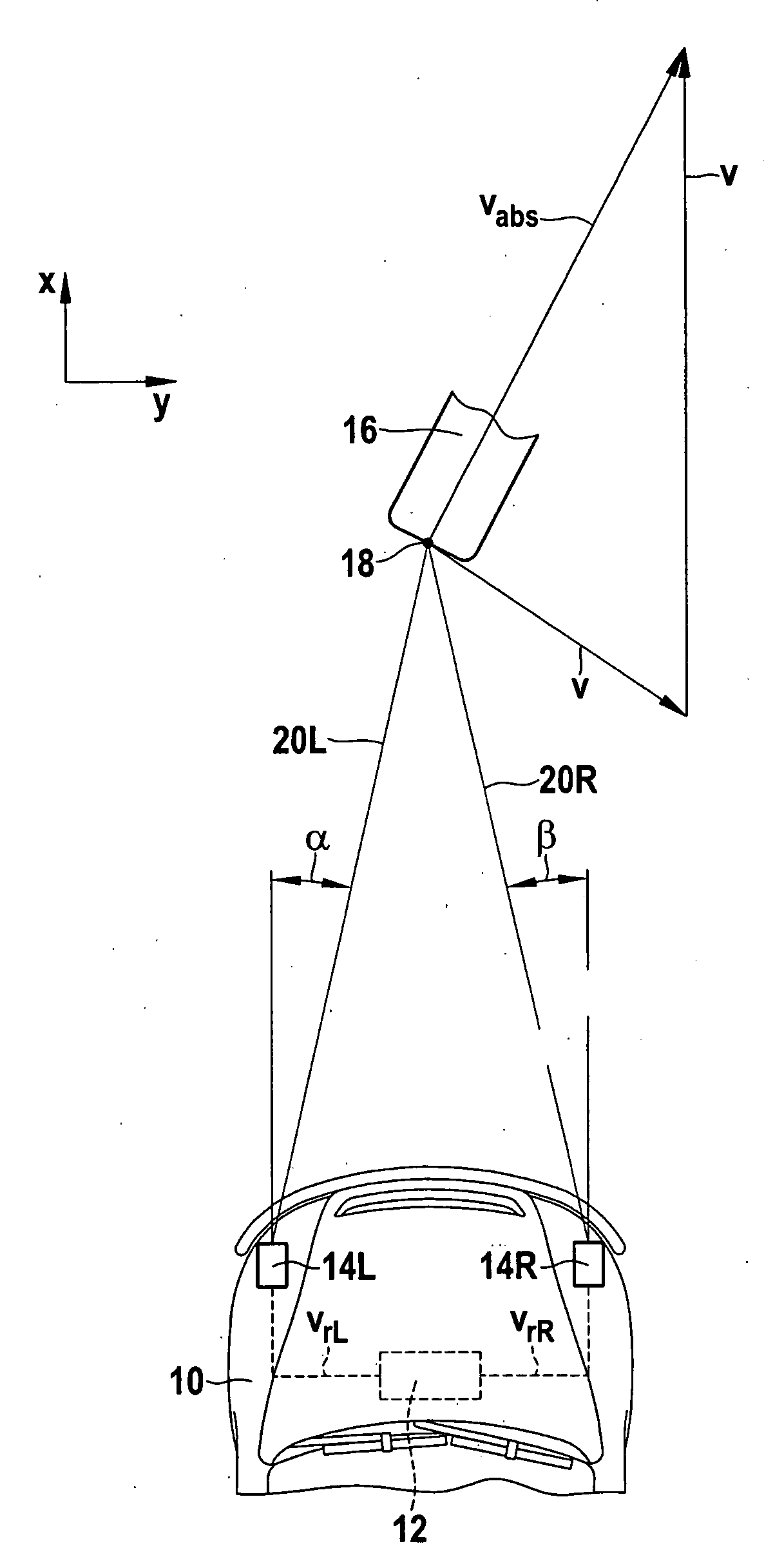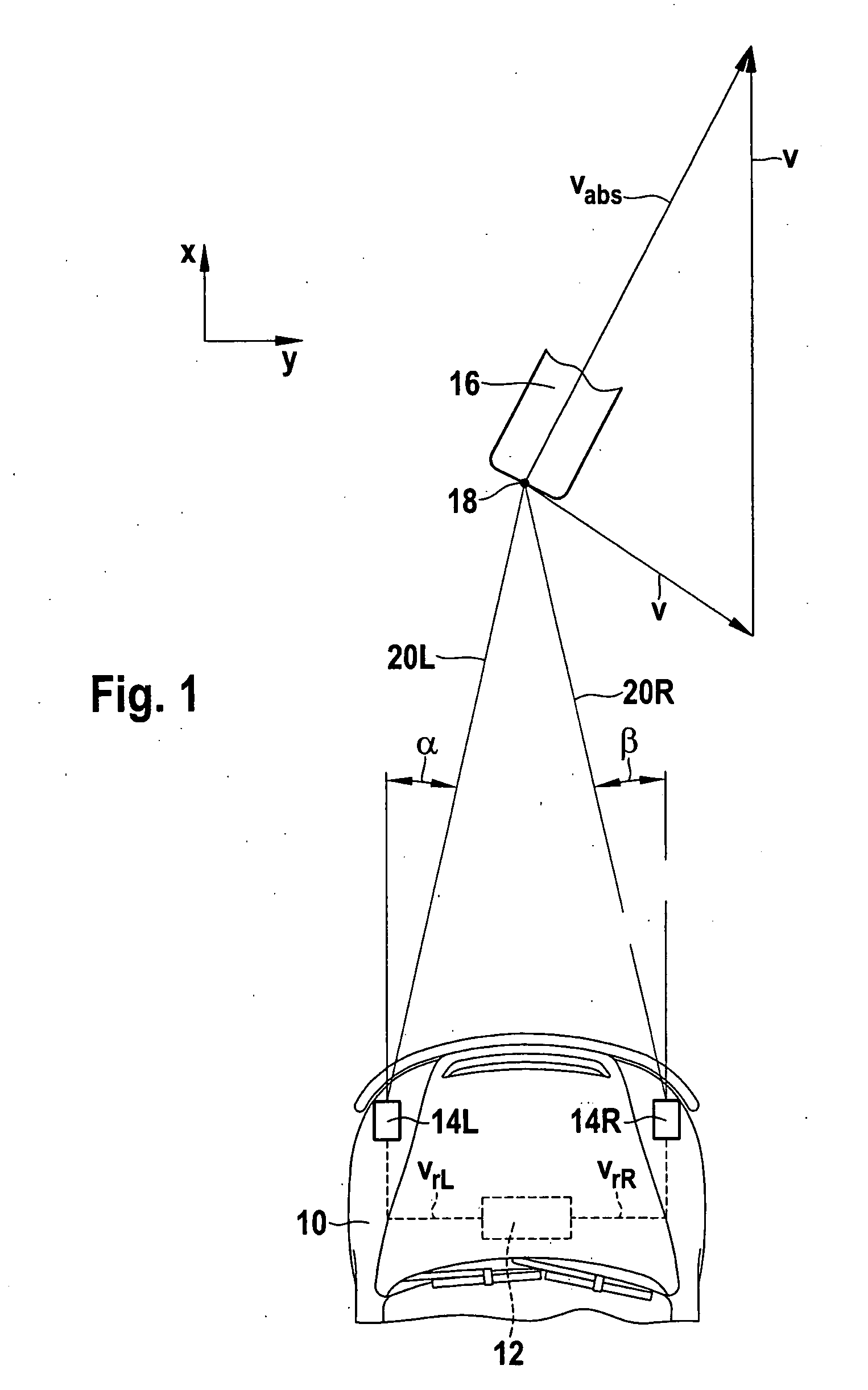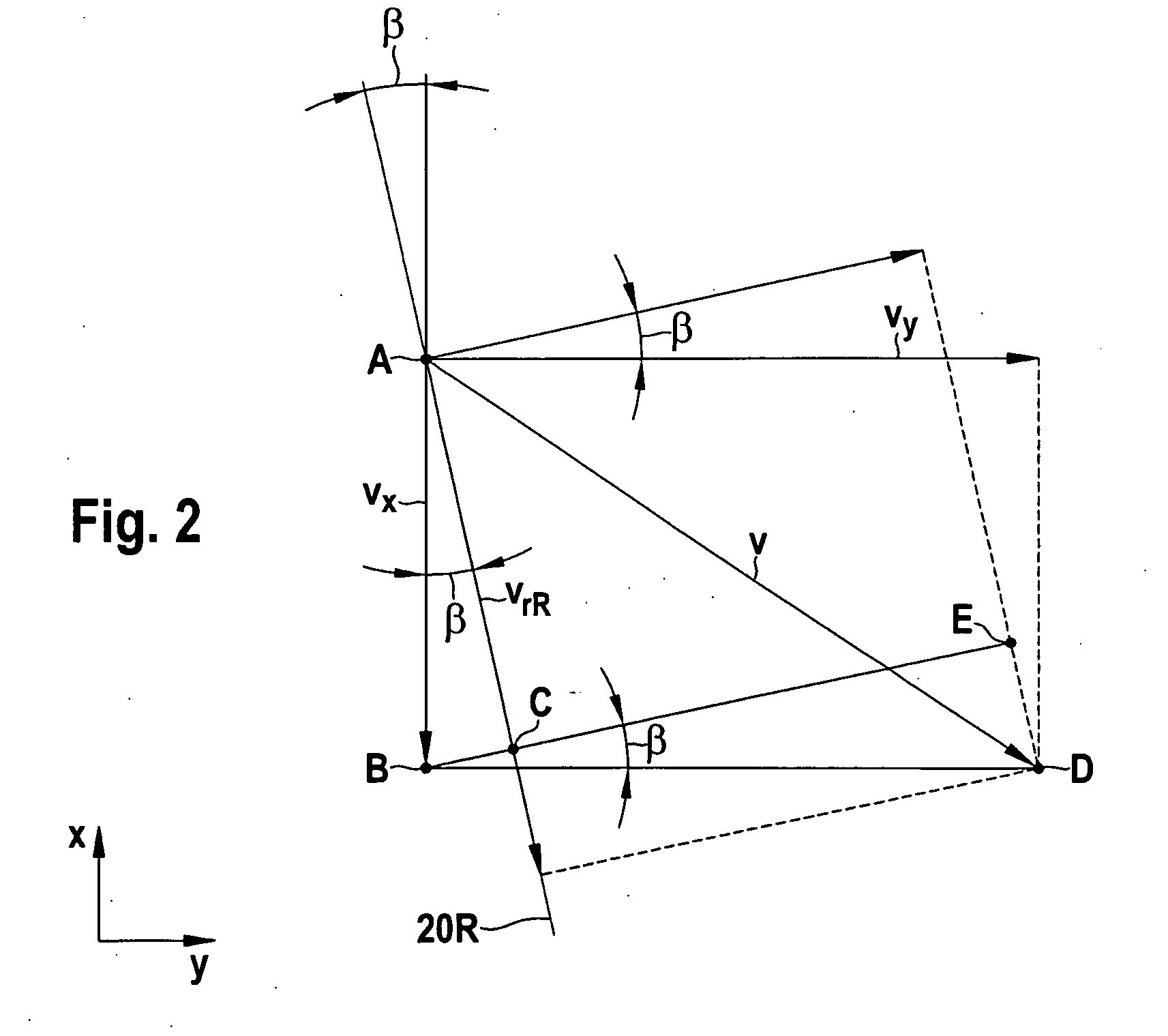Method for measuring lateral movements in a driver assistance system
- Summary
- Abstract
- Description
- Claims
- Application Information
AI Technical Summary
Benefits of technology
Problems solved by technology
Method used
Image
Examples
Embodiment Construction
[0025]FIG. 1 schematically shows the front part of a motor vehicle 10, which is equipped with a driver assistance system 12, such as an ACC system. This driver assistance system includes two angle-resolving distance sensors 14L and 14R, which are installed in proximity to the left and right lateral delimitations of vehicle 10 in the front part, so that they jointly monitor the area in front of vehicle 10. For example, distance sensors 14L and 14R are long-range radar sensors (LRR).
[0026]In the example shown, an approximately punctiform object 16, such as the rear end of a preceding motorcycle, is located by both distance sensors 14L and 14R. It may be assumed as a somewhat idealized case that both sensors receive radar echoes from a single reflection point 18 on the rear of object 16. Accordingly, left distance sensor 14L measures the value for the distance between reflection point 18 and this distance sensor and a value for radial component vrL of the relative velocity of object 16...
PUM
 Login to View More
Login to View More Abstract
Description
Claims
Application Information
 Login to View More
Login to View More - R&D
- Intellectual Property
- Life Sciences
- Materials
- Tech Scout
- Unparalleled Data Quality
- Higher Quality Content
- 60% Fewer Hallucinations
Browse by: Latest US Patents, China's latest patents, Technical Efficacy Thesaurus, Application Domain, Technology Topic, Popular Technical Reports.
© 2025 PatSnap. All rights reserved.Legal|Privacy policy|Modern Slavery Act Transparency Statement|Sitemap|About US| Contact US: help@patsnap.com



